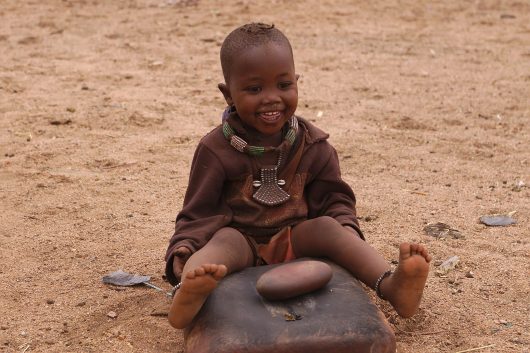Inequality and Poverty in Namibia: A Gaping Wealth Gap

Namibia is a country in southwestern Africa, bordered by the Atlantic Ocean to the west. It is home to diverse wildlife species. Namibia is one of just nine countries in Africa categorized by the World Bank as “upper middle income.” Poverty in Namibia, however, is still prevalent and the country is rife with extreme wealth imbalances.
The Namibian Economy
The Namibian economy boasts relatively high growth, with an average growth rate of 4.3% between 2010 and 2015. The economy is heavily based on the country’s mining industry, which accounts for 50% of foreign exchange earnings. Despite its high income, Namibia has a poverty rate of 17.2%, an unemployment rate of nearly 20% and an HIV prevalence rate of 11% percent.
Poverty in Namibia is acute in the northern regions of Kavango, Oshikoto, Zambezi, Kunene and Ohangwena, where upwards of one-third of the population lives in poverty. Furthermore, the country’s status as upper middle income makes its most vulnerable population ineligible for aid from the United Nations Development Programme (UNDP) and other development groups.
Economic Disparity in Namibia
The apparent imbalance between Namibia’s high income and simultaneous extreme prevalence of poverty can be traced to enduring income inequalities. Namibia has the second most unequal wealth distribution globally, with a Gini coefficient of 0.63, after South Africa, making it one of the most unequal countries. High inequality persists despite several government initiatives, reflecting the nation’s history when the apartheid system created significant economic and social disparities between the white minority and the Black majority.
In Namibia, the most disadvantaged 20% of the population receives approximately 3% of the total expenditure, while the richest 20% receives more than 70%. Gender inequality is also a significant issue in Namibia. As of 2023, women make up only 55.8% of the labor force, while men make up 63.7%. This gender gap in labor force participation is lower than in other upper-middle-income nations.
Efforts
Even though poverty in Namibia has declined significantly in recent years, the United Nations (U.N.) and other advocacy groups have pressured the Namibian government to do more to tackle the large wealth gap. In response, the Namibian government has implemented several initiatives to narrow the wide gap between the most vulnerable and wealthy populations.
One of these initiatives is the Black Economic Empowerment (BEE) program. This policy aims to encourage the participation of the Black population in the economy, which could ultimately transform Namibia’s economy while narrowing the wealth distribution. Additionally, the New Equitable Economic Empowerment Framework (NEEEF), which the Namibian government implemented in 2018, encourages businesses to transfer ownership and skills to historically disadvantaged Namibians.
Final Remark
While these efforts are steps in the right direction, addressing Namibia’s significant wealth gap and inequality remains an ongoing challenge requiring sustained commitment and innovative solutions.
– John English
Photo: Flickr
Updated: June 01, 2024
